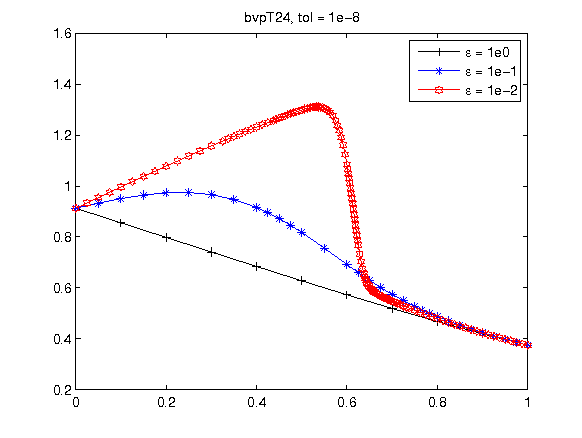Shock Wave: bvpT24
| shock wave problem: bvpT24 | |
|---|---|
| Contributor: | testset of J.R. Cash |
| Discipline: | fluid dynamics |
| Accession: | 2013 |
Short description:
The problem describes a shock wave in a one dimension nozzle flow. The steady state Navier-Stokes equations generate a second order differential equations that is reduced to a first order system of 2 equations.
Applicable solvers:
all the solvers supported by the Test Set.
Mathematical description:
Consider a shock wave in a one dimension nozzle flow. The steady state Navier-Stokes equations give

where t is the normalized downstream distance from the throat, z is the normalized velocity, A(t) is the area of the nozzle at t , with
![]()
We write this problem in first order form by defining ![]() and
and ![]() , yielding a system of differential equations of the form
, yielding a system of differential equations of the form
![]()
where
![]()
with
![]()
The boundary conditions are obtained from
![]()
Given its simple appearence, the BVP turns out to be a surprisingly difficult numerically. An ![]() shock develops, whose location depends on
shock develops, whose location depends on ![]() .
.
Singular-perturbation-type problems usually require a continuation method to solve them .For this BVP, however, many steps need to be taken.
Download:
- Fortran code: bvpT24.f
- matlab code: bvpT24.m
- R code: first order: bvpT24.R, high order: bvpT24_ho.R
